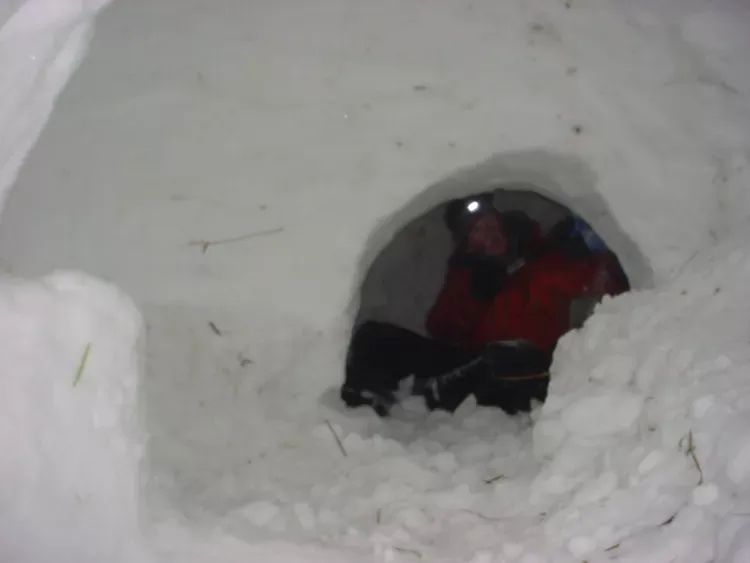
Tips on Building a Snow Fort
Originally posted January 2015
With the latest snow that we have received, there are a lot of people getting out there to enjoy the fluffy white stuff. With all the snowshoeing, sledding, skiing, and ice fishing that we have available nearby it is important to know how to survive a night if it comes down to it. Of course if you just want to get out there and go winter camping, that’s awesome too. But before you make the decision to spend a night in the snow, make sure you know how to build a snow fort.
Types of Snow Forts
There are two basic types of snow shelters that you can build. The first is a true snow fort; one that is built into a large snow bank. The other is when you pile up the snow to make a drift big enough to build a shelter in it. This is called a
quinzhee. Both are built essentially the same way.
The Entrance
When you start carving into the snow, you want to start at the lowest point possible. Cold air settles down, so you don’t want the cold air filtering into your snow shelter as you sleep. Angle the entrance slightly upward for a couple of feet (depending on how big of a drift or pile you have to work with). By the way, the “mole man” is going to get very wet while digging.

The Main Room
If you are building the shelter for the fun of it, you can make something huge and elaborate. If this is an emergency shelter, just make it big enough for you to fit inside comfortably. The floor of the room in which you sleep needs to be higher than the top of the entrance door. This will help keep you the warmest. Make sure the ceiling is a perfect dome so it doesn’t collapse on you, and keep your sleeping surface level. If you have candles with you, you can carve little platforms for them to sit on.

The Air Holes
You will need two air holes in your shelter. The first can be provided by the entrance, unless you have a second room. If there is a second room to your shelter you will want to poke a small hole angled downward and out of your shelter. Carbon dioxide sinks, and you don’t want the room filling with this deadly gas.
The other hole you will want is going out the top of your shelter. It will help to bring in fresh air so you can breathe comfortably. Both holes should be about an inch or two in diameter. Too big and a lot of cold air will come in.
Sleeping in Your Shelter
If it sounds cold sleeping in a snow cave, you’re right; it is. However, it is a lot warmer than in the open air. Your cave will stay about 32 degrees with just the warmth of a couple bodies or a candle. Just be sure to have plenty of padding between you and the snow so that you don’t lose all your warmth in the night.
Having a great sleeping bag will help keep you warm, but there is a chance that you’ll still get cold. If you can, boil some water before you go to sleep, put it into a water bottle, and throw it to the bottom of your sleeping bag. It will slowly release its heat all night. If you wake up and it’s no longer hot, set it out of your bag (make sure the lid is on tight, I tossed one in once and the lid popped off). In addition to the water, keep some snacks nearby. A handful of granola will help your body burn calories and warm you back up. Be sure to block most of the entrance with your pack or a large block of snow when you turn in for the night (leave gaps so the carbon dioxide can escape).
If You Go
Camping in the winter can be dangerous if you’re not careful. So make sure that you’re adequately prepared and you really know what you’re doing. This should be just a starter guide to building a snow shelter, read up on it, practice in the deep snow outside right now, and that way, when you do get to go enjoy the mountains, you will know exactly what you’re doing.
Have you ever camped in the snow before? What was your experience like?
 by Scott Sery
by Scott SeryScott is a writer, outdoor enthusiast, beer snob, and woodworker. When he is not out exploring all of the wonders around Billings, he loves to sit down for a frosty brew at one of the many great breweries we have available to us. You can read about most of his adventures, and many of the fine brews he has sipped right here. Find out more about Scott at ScottSery.com
